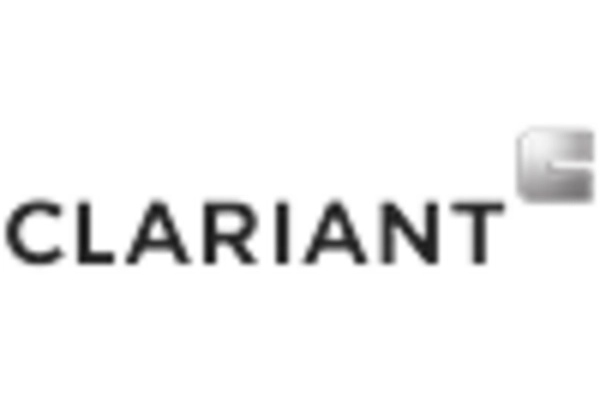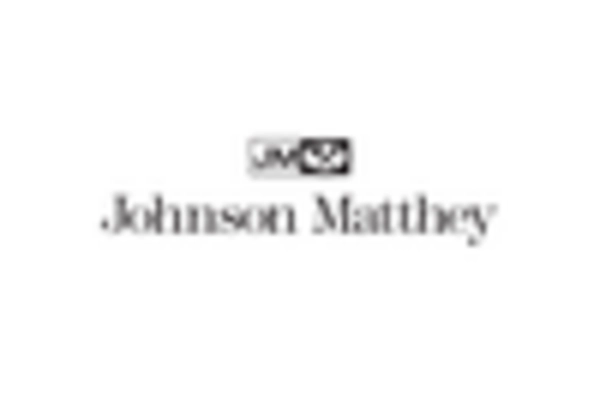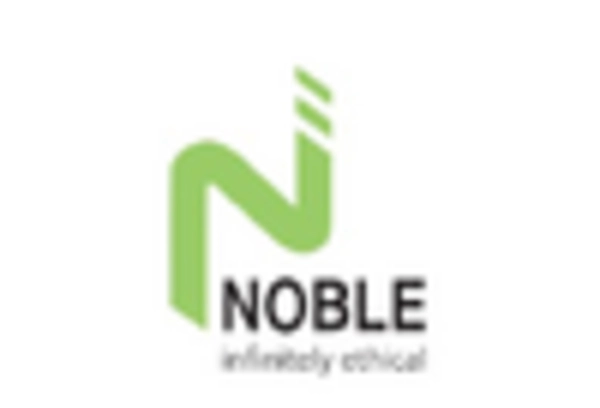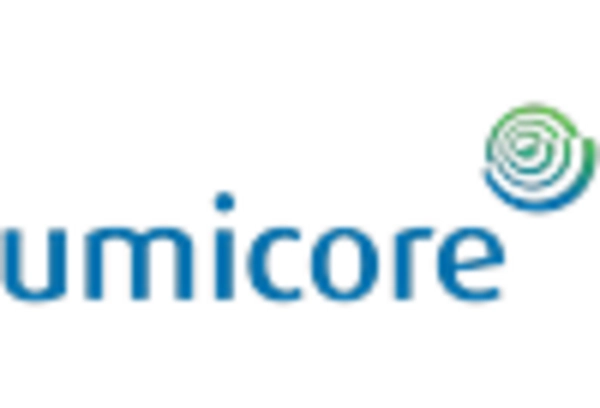Market Trends
Key Emerging Trends in the Precious Metal Catalysts Market
The Precious Metal Catalysts Market is currently witnessing notable trends that shape its trajectory and influence key stakeholders. As of the latest market analysis, several factors contribute to the dynamic nature of this industry. Firstly, the increasing demand for clean energy solutions has propelled the adoption of precious metal catalysts in various sectors. With a growing emphasis on sustainable practices, these catalysts play a crucial role in processes like fuel cells, where platinum and other precious metals act as catalysts for electrochemical reactions. This surge in demand is indicative of a broader shift towards green technologies and environmentally friendly solutions.
Moreover, the automotive industry's evolution towards electric vehicles (EVs) has fueled the demand for precious metal catalysts. As countries worldwide aim to reduce their carbon footprint and combat climate change, automakers are transitioning from traditional internal combustion engines to electric powertrains. Precious metal catalysts are integral in the production of fuel cells for electric vehicles, reinforcing their significance in the automotive sector. This trend is likely to persist and intensify as governments implement stricter emission standards and provide incentives for the adoption of electric vehicles.
On the other hand, the fluctuating prices of precious metals themselves impact the dynamics of the Precious Metal Catalysts Market. The market is closely tied to the prices of metals such as platinum, palladium, and rhodium, which are essential components of these catalysts. Any volatility in the prices of these metals can directly influence production costs and subsequently affect market trends. Market participants need to stay vigilant and adapt their strategies to navigate the inherent uncertainties associated with the precious metals market.
Furthermore, geographical factors contribute to the market trends of precious metal catalysts. Regions with a strong emphasis on renewable energy and stringent environmental regulations are witnessing a higher adoption rate of these catalysts. For example, countries in Europe are increasingly investing in fuel cell technology, creating a conducive environment for the growth of the Precious Metal Catalysts Market. Additionally, Asia-Pacific is emerging as a key player in this market, driven by the rapid industrialization and the need for cleaner energy sources in countries like China and Japan.
The industry is also witnessing innovation in terms of material composition and manufacturing processes. Researchers and manufacturers are exploring alternative materials and methods to reduce dependency on scarce and expensive precious metals. This trend aligns with the broader industry goals of sustainability and cost-effectiveness. The development of efficient catalysts using less expensive or more abundant materials is crucial for the long-term growth and viability of the Precious Metal Catalysts Market.

















Leave a Comment